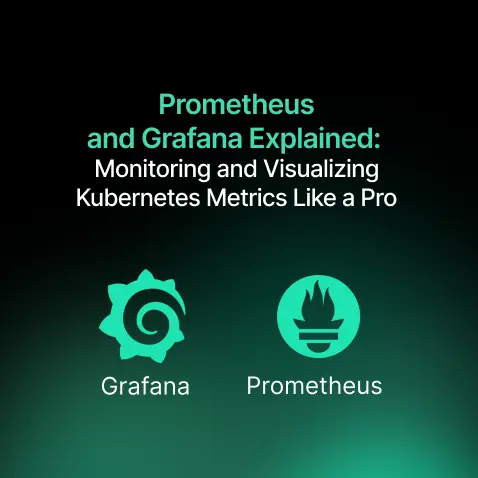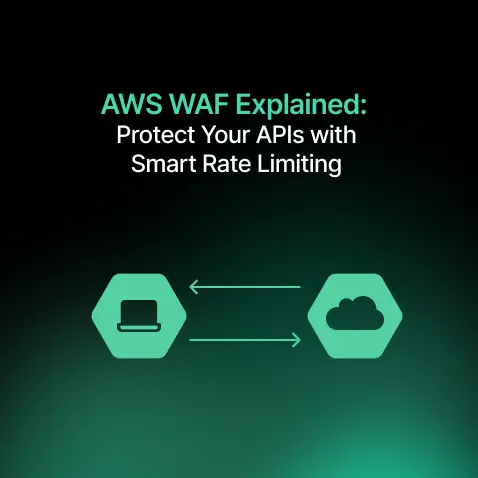What Are Cloud Security Services? A Complete Guide for US Companies in 2025
- Nitin Yadav
- Knowledge
About

Cloud security services safeguard cloud data, apps, and networks from cyberattacks. This 2025 guide explains how US businesses use managed security to stay compliant, prevent breaches, and scale safely across AWS, Azure, and GCP
Industries
- AWS security services, Azure cloud security, Cloud Compliance, cloud cybersecurity 2025, cloud data protection, cloud encryption, cloud network security, cloud security for US companies, Cloud Security Solutions, cloud threat detection, DevSecOps, fintech cloud security, GCP cloud security, HIPAA cloud compliance, loud security services, managed cloud security, Multi-Cloud Security, PCI DSS cloud security, SaaS security, SOC2 compliance, SquareOps cloud security services, Zero Trust security
Share Via
Cloud adoption in the US has exploded over the past decade. SaaS companies, healthcare providers, fintech startups, and large enterprises now rely on the cloud to store sensitive data, run critical applications, and deliver seamless digital experiences. Yet, with this shift comes a massive challenge: security.
Cyberattacks, ransomware, and insider threats have become increasingly sophisticated, targeting cloud infrastructure as businesses continue to scale up their digital operations. In 2025, a single breach can cost a US company millions in fines, lost revenue, and reputational damage. Traditional, perimeter-based IT security is no longer enough.
This is where cloud security services come into play. These managed solutions help businesses secure their cloud environments by protecting applications, data, and networks from evolving threats. They ensure compliance with stringent US regulations, such as SOC 2, HIPAA, and PCI DSS, while enabling companies to scale without fear.
In this guide, we’ll break down everything you need to know about cloud security services: what they are, why they matter in 2025, their components, benefits, leading providers, and future trends.
What Are Cloud Security Services?
Cloud security services are specialized solutions designed to safeguard cloud-based infrastructure, data, and applications. Unlike traditional IT security, focused on securing on-premise server,s cloud security is built for distributed, elastic, and multi-cloud environments.
These services typically cover:
- Identity & Access Management (IAM): Controlling who accesses what.
- Data Protection & Encryption: Securing data in transit and at rest.
- Network Security: Monitoring traffic and preventing intrusions.
- Threat Detection & Response: Identifying and mitigating attacks in real-time.
- Compliance Management: Ensuring adherence to HIPAA, SOC2, and GDPR.
Example: A US fintech startup running on AWS and Azure can use cloud security services to encrypt customer data, monitor suspicious logins, and prove compliance during audits.
In essence, cloud security services provide end-to-end visibility, protection, and control all essential in a cloud-first era.
Why Cloud Security Services Are Critical for US Businesses in 2025
- Rising Cyber Threats
- Ransomware attacks increased by 90% in 2024.
- Cloud-hosted apps are now primary targets for phishing and malware.
- Multi-Cloud Complexity
- Most US companies utilize at least two to three cloud providers.
- Without centralized security, blind spots emerge.
- High Cost of Breaches
- IBM’s 2024 report: The average cost of a data breach in the US is $9.5 million the highest worldwide.
- Regulatory Pressure
- Compliance frameworks (SOC2, HIPAA, PCI DSS) demand continuous monitoring.
- Failing audits can result in fines and lost contracts.
- Customer Trust
- Security certifications (SOC 2 Type II, HIPAA) now significantly influence buyer decisions.
- For SaaS and fintech companies, strong cloud security is a sales enabler.
In 2025, cloud security services will no longer be optional. They’re the backbone of business resilience and growth.
Key Components of Cloud Security Services
1. Identity & Access Management (IAM)
- Zero Trust architecture: “never trust, always verify.”
- Tools: MFA, SSO, role-based access.
2. Data Protection & Encryption
- Encryption at rest and in transit.
- Tokenization for sensitive data (credit cards, health records).
3. Network Security
- Cloud firewalls, IDS/IPS systems.
- Microsegmentation to isolate workloads.
4. Cloud Workload Protection
- Protects containers, Kubernetes clusters, and serverless workloads.
- Ensures workloads are patched and compliant.
5. Threat Detection & Response
- Managed detection and response (MDR).
- Security Information and Event Management (SIEM).
- Automated incident response.
6. Compliance Management
- Continuous logging and monitoring.
- Audit-ready dashboards for SOC2, HIPAA, PCI DSS.
7. Disaster Recovery & Business Continuity
- Backups, geo-redundancy, and failover systems.
- Ensures uptime even during large-scale outages.
Together, these components deliver comprehensive protection tailored to cloud environments.
Benefits of Cloud Security Services for US Companies
- Risk Reduction
- Lower chances of ransomware, phishing, and insider threats.
- Lower chances of ransomware, phishing, and insider threats.
- Regulatory Compliance
- Streamlined audits, reduced penalties, and faster certification.
- Streamlined audits, reduced penalties, and faster certification.
- Cost Savings
- Avoids fines, downtime, and reduces security staffing costs.
- Avoids fines, downtime, and reduces security staffing costs.
- Scalability
- Security grows with your infrastructure no need for constant re-architecture.
- Security grows with your infrastructure no need for constant re-architecture.
- 24×7 Protection
- Continuous monitoring ensures threats are mitigated immediately.
- Continuous monitoring ensures threats are mitigated immediately.
- Customer Trust
- Certifications become proof of reliability in competitive SaaS and fintech markets.
Example: A healthcare SaaS firm using cloud security services passed HIPAA audits in half the time compared to manual processes.
Types of Cloud Security Services
- Managed Cloud Security
- Outsourced to MSSPs who handle monitoring, detection, and response.
- Outsourced to MSSPs who handle monitoring, detection, and response.
- Cloud-Native Security Tools
- AWS GuardDuty, Azure Security Center, Google Cloud Security Command Center.
- AWS GuardDuty, Azure Security Center, Google Cloud Security Command Center.
- Third-Party SaaS Security Platforms
- Palo Alto Prisma, CrowdStrike Falcon, Zscaler.
- Palo Alto Prisma, CrowdStrike Falcon, Zscaler.
- DevSecOps Security
- Integrates security into CI/CD pipelines.
- Integrates security into CI/CD pipelines.
- Zero Trust Security Services
- Identity-first protection for distributed workforces.
Cloud Security Services vs Traditional Security
Feature | Traditional Security | Cloud Security Services |
Architecture | Perimeter-based | Zero Trust, distributed |
Scalability | Limited | Elastic & cloud-native |
Compliance | Manual audits | Continuous monitoring |
Deployment | On-prem hardware | SaaS-based, managed |
Cost | High CapEx | Flexible subscription |
Traditional tools fail in dynamic, multi-cloud environments. Cloud-native security is now the standard.
Top Cloud Security Service Providers in 2025
- AWS Security Services – GuardDuty, Shield, Macie for native AWS.
- Microsoft Defender for Cloud – Integrated Azure defense.
- Google Cloud Security Command Center – Threat detection for GCP.
- Palo Alto Prisma Cloud – Comprehensive multi-cloud protection.
- CrowdStrike Falcon Cloud – AI-driven threat detection.
- Zscaler Cloud Security – Leader in zero trust and secure access.
- SquareOps – Managed cloud security services tailored for SaaS and enterprises in the US.
Each has its strengths: hyperscalers excel in integration, while managed providers offer hands-on expertise.
How to Choose the Right Cloud Security Service Provider
When evaluating providers, US businesses should consider:
- Compliance Readiness – Can they handle HIPAA, SOC2, PCI DSS?
- 24×7 SOC Monitoring – Do they provide round-the-clock detection?
- Multi-Cloud Support – Seamless integration with AWS, Azure, and GCP.
- Automation & AI – Predictive threat detection.
- Transparent Pricing – Clear costs without hidden fees.
- Case Studies – Proven results in your industry.
Pro tip: Choose providers that go beyond alerts to deliver incident response and remediation.
Real-World Use Cases of Cloud Security Services in the US
- SaaS Startup
- Achieved SOC2 compliance in 3 months using managed security services.
- Achieved SOC2 compliance in 3 months using managed security services.
- Healthcare Provider
- Protected patient data and passed HIPAA audits with automated encryption.
- Protected patient data and passed HIPAA audits with automated encryption.
- FinTech Company
- Prevented fraud by deploying real-time monitoring for PCI DSS compliance.
- Prevented fraud by deploying real-time monitoring for PCI DSS compliance.
- Retail Enterprise
- Secured millions of transactions during holiday surges.
- Secured millions of transactions during holiday surges.
- Remote Work Security
- Enforced zero-trust IAM for distributed employees across the US.
Future of Cloud Security Services: AI, Zero Trust, and Automation
The next era of cloud security is already here:
- AI/ML-driven Threat Detection – Systems learn attack patterns.
- Automated Compliance – Continuous adherence without manual checks.
- Self-Healing Infrastructure – Auto-remediation of vulnerabilities.
- Zero Trust Standardization – Identity-First Security Becomes Mandatory.
- Unified Multi-Cloud Dashboards – Single pane of glass for all environments.
By 2030, cloud security is expected to evolve into autonomous, AI-driven ecosystems capable of automatically preventing most breaches.
Conclusion
In 2025, cloud security services are no longer a “nice-to-have.” They’re the foundation of trust, compliance, and business continuity for US companies.
From preventing costly breaches to enabling regulatory compliance and fostering customer trust, cloud security services empower businesses to innovate with confidence.
If your SaaS, fintech, or enterprise business is ready to scale securely, partner with SquareOps. We provide tailored cloud security services designed for US companies combining automation, compliance, and 24×7 protection.
Frequently asked questions
Cloud security services protect cloud-based infrastructure, data, and applications from cyber threats while ensuring compliance.
They safeguard against ransomware, enable compliance with SOC2/HIPAA, and prevent costly downtime.
Managed services, cloud-native tools, third-party SaaS security, DevSecOps integration, and zero trust frameworks.
AWS, Azure, GCP, Palo Alto, CrowdStrike, Zscaler, and managed providers like SquareOps.
They automate logging, encryption, and monitoring, making audits for SOC2, HIPAA, and PCI DSS faster and easier.
They use encryption, tokenization, and access controls to secure data in transit and at rest—preventing unauthorized access or leaks in multi-cloud environments.
Yes. Cloud security services scale with your business, offering enterprise-grade protection, compliance, and 24×7 monitoring without high infrastructure costs.
Zero Trust is a “never trust, always verify” framework that ensures every user, device, and application is authenticated continuously before accessing cloud resources.
They provide unified visibility, centralized policy enforcement, and automated threat detection across AWS, Azure, and Google Cloud—eliminating blind spots.
SquareOps delivers managed cloud security solutions tailored for SaaS, fintech, and enterprise businesses in the US combining automation, compliance, and 24×7 protection.
Related Posts

Comprehensive Guide to HTTP Errors in DevOps: Causes, Scenarios, and Troubleshooting Steps
- Blog

Trivy: The Ultimate Open-Source Tool for Container Vulnerability Scanning and SBOM Generation
- Blog

Prometheus and Grafana Explained: Monitoring and Visualizing Kubernetes Metrics Like a Pro
- Blog

CI/CD Pipeline Failures Explained: Key Debugging Techniques to Resolve Build and Deployment Issues
- Blog

DevSecOps in Action: A Complete Guide to Secure CI/CD Workflows
- Blog

AWS WAF Explained: Protect Your APIs with Smart Rate Limiting
- Blog

